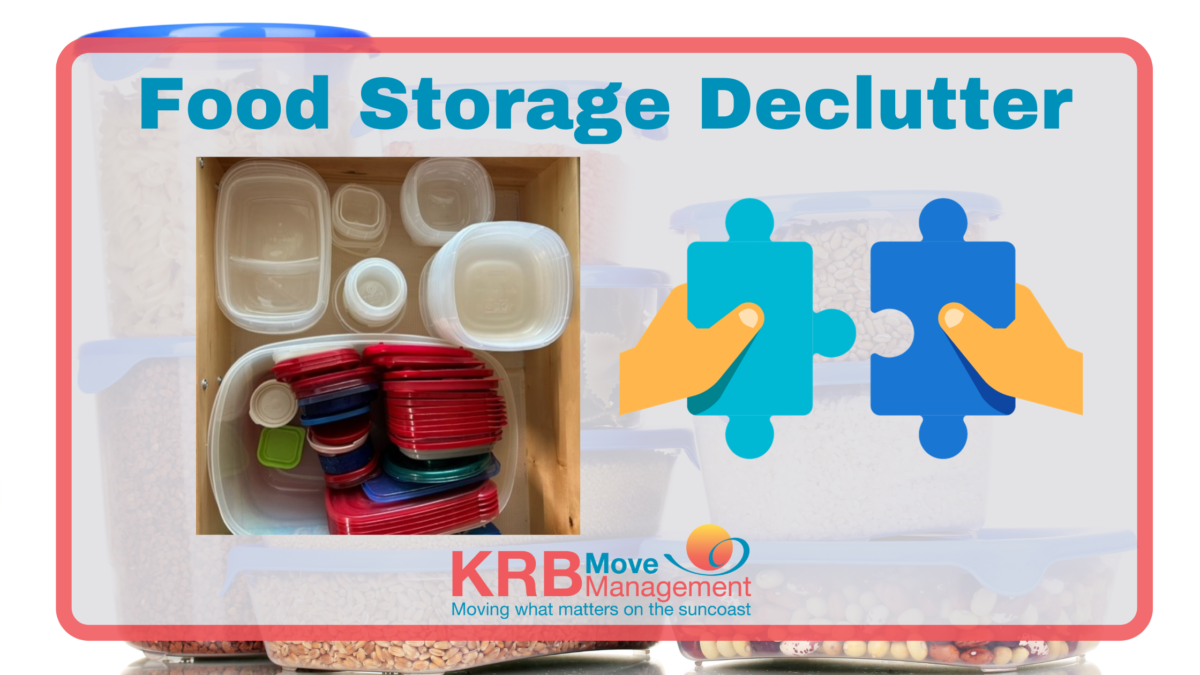
Kitchen Utensils: What Do We Really Need?
September 27, 2023
Remember the Season of Giving
November 30, 2023“Matchmaker, matchmaker, make me a match, find me a find, catch me a catch.” I always loved that song from Fiddler on the Roof, and I find it running through my head when I am looking for the matching lid to a storage container when putting away leftovers. “Find me the perfect match.” It happens quickly now that I have a system, but it wasn’t always the case.
As I have mentioned, I am a cook and fortunately I have a husband who enjoys eating leftovers. One of the many reasons I love him. I cooked for a family for years and now with just the two of us, I tend to still cook for a family. Abbondanza. The remainder goes into the fridge or freezer. Sometimes I show up at neighbors’ doors with food and like it or not, they are gifted with a bowl of soup or a serving of pasta. In these scenarios, storage containers are involved.
For anyone younger than 40, Tupperware and Tupperware parties may be a foreign concept. Beginning in the 1950’s, most kitchens had an assortment of colorful Tupperware storage containers. We still see harvest gold and avocado green bowls with press-on burp-able lids in plenty of homes and truth be told I have an enormous orange gold Tupperware bowl that I have used for Halloween candy storage for 30+ years and it is the perfect size for the double batch of Mimi’s Pumpkin cookies as well. So, I have hold outs, too. We were reminded recently of an article claiming that the aging Tupperware is leaching unhealthy chemicals into our food (What you should know about Tupperware and plastic container safety? August 16, 2023, CNN Health). Among other things, we learned we shouldn’t be putting plastic containers in our dishwashers or microwaves.
What has replaced the vintage Tupperware/plastic bowls? There are various varieties of cheap clear plastic containers with snug colored snap-on or screw-on lids on the market. More commonly, the new go-tos are glass rectangular, square, or round glass bowls with snap on lids? Why? Once uncapped, they can go from freezer to fridge to microwave or oven to table to dishwasher. Glass is seen as user friendly, environmentally friendly, and healthier than plastic. The downside to glass storage containers is that they are heavier and not as easily transportable.
Why not have a small supply of various containers? Cheaper plastic containers for giveaway items. Note here that I also buy lonely unmatched ceramic or glass plates at the hospice thrift store and give them away with meals and cookies on them. I ask that the recipients keep them and pass them on when they give food away. They are often returned to me with more cookies and the reciprocal giving continues. The value of plastic containers for giveaways is the tight seal. It is also easy to bring lunch to work in a lightweight plastic bowl and pop the contents onto a paper plate to cook in the microwave at work. Lighter to carry home in your lunch box as well. Use glass containers for portions that will be eaten at home.
We use logical placement when organizing a kitchen with coffee mugs in the cabinet over the coffee pot and plates over the dishwasher. The same applies to storage containers. As you return uneaten portions of meals to the kitchen from the dining area, keep glass storage containers near where you are portioning out leftovers to place them in the fridge or freezer. A cabinet near the sink or next to the fridge will work well.
Giveaway plates and bowls can be stored up and out of the way for those special occasions when food is being packed to leave. We discourage using the high cabinets that require a step stool for anything that is used regularly.
Now to the crux of the matter, that is matching lids to bases. There are many gadgets in retail stores that will stack your storage container bases and control your lids. You might consider a simpler method: using what you have. If you have the space in a drawer, stack the container bases by size. In one of the wider containers, stack the lids by size on their sides. You can see all the lids at a glance and grab the one that fits the base you have chosen. Occasionally, match the bases to the lids and recycle any orphans. Someday, we will discuss orphan socks.

